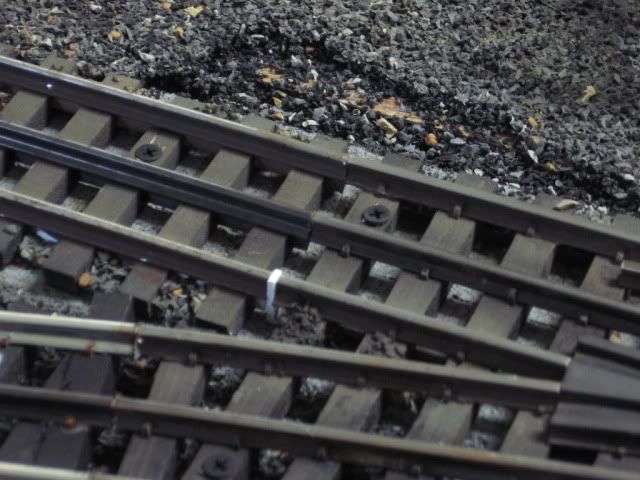So, after setting up, and wiring in, my first pair of Ross Crossover Switches, with Non Derailing: I discovered that the flange tips of the rails that are used for non-derailing were actually touching. Per Steve's direction, I had removed the spikes at the tips of those rail flanges, but there was still contact, and the switches would just flutter back and forth when one button was pushed, and would do nothing when the other button was pushed.
I ended up taking a small flat blade screwdriver and sticking it down between those flange tips, and rotating it back and forth to force them apart, which did work, and the switches, now, operate perfectly, with correct non-derailing action as well.
I am still concerned that as these rails relax over time, those flange tips will, again, make contact. Has anyone out there figured out a way to insure that these rail flange tips stay separated, and/or insulated from each other?
1. Would id work to put a small slit in the tie, between these flange tips, and slip a small piece of plastic into that slit?
2. Would it work to put a drop or two of some kind of epoxy there, that would actually stick to the tie, to hold the flange tips apart?
All ideas are welcome,
Roger



















